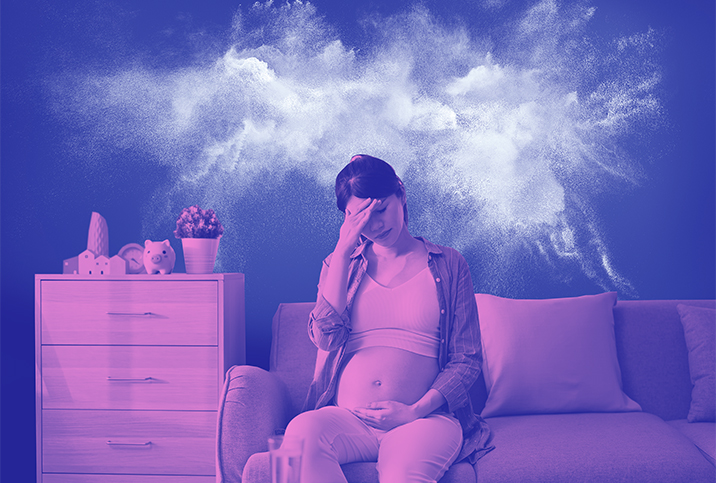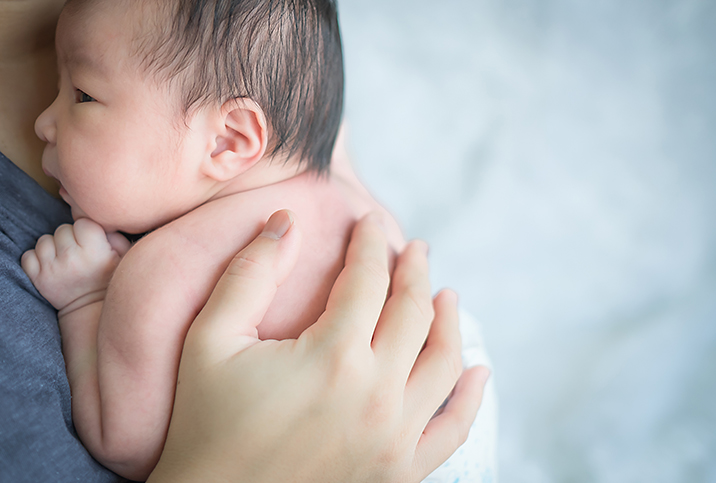Infant Mortality Rate in the US Rose for First Time in Decades in 2022

Key Points
- The number of infant deaths per 1,000 live births has increased for the first time since 2002, according to a new report from the Centers for Disease Control and Prevention (CDC).
- The increase was most pronounced among specific populations, including babies born to Native American, Alaskan native and white mothers; preterm infants; and those born in Georgia, Iowa, Missouri and Texas.
- Experts think various factors are to blame, including maternal stress, economic instability, COVID-19 and a lack of federal protections for abortion access.
Whether it's due to maternal stress, economic instability or numerous other factors, the United States' infant mortality rate rose in 2022 for the first time in two decades.
The overall infant mortality rate—indicating the number of deaths per 1,000 live births—increased by 3 percent from 2021 to 2022, according to a 2023 report published by the Centers for Disease Control and Prevention (CDC).
The last year-over-year increase, also 3 percent, occurred between 2001 and 2002.
What was the infant mortality rate in 2022?
There were 5.6 infant deaths for every 1,000 babies born in 2022, compared to 5.44 per 1,000 in 2021, according to the 2023 Vital Statistics Rapid Release report from the National Center for Health Statistics (NCHS).
In 2001 and 2002, there were 6.8 and 7 deaths per 1,000, respectively, according to a 2004 report.
In 2021, the number of infant deaths increased from 2020 but the mortality rate remained the same, per the 2023 CDC report.
"This is a serious issue for humanity," said Yoel Sadovsky, M.D., the executive director of Magee-Womens Research Institute and Foundation in Pittsburgh. "Each of these cases is a tragedy for the family and communities."
What demographics were affected by rising infant mortality rates in 2022?
Specific demographics experienced a climb in infant deaths. The 2023 report contains estimates based on vital records submitted to the NCHS.
The change in mortality rates was most pronounced among infants born to the following demographics:
- American Indian and Alaskan Native (7.46 to 9.06)
- White, non-Hispanic (4.36 to 4.52)
- Black (10.86)
The rates for babies born to Black mothers increased just slightly but remained the highest of all.
"It's difficult to pinpoint the exact reasons for the differences in infant mortality rates among different racial and ethnic groups. However, several factors could contribute to these disparities," said Meleen Chuang, M.D., a clinical associate professor in the department of obstetrics and gynecology, Family Health Centers at NYU Langone in New York City. "These may include disparities in access to quality healthcare, socioeconomic factors, systemic racism, cultural differences and various social determinants of health."
Rates among males, preterm babies, those born to mothers ages 25 to 29, and those born in the states of Georgia, Iowa, Missouri and Texas also increased.
Why did infant mortality rates increase in 2022?
The report didn't provide an explanation but did note the rate of infant deaths due to maternal complications—such as the cervix opening or amniotic sac rupturing prematurely—rose by 8 percent.
Additionally, the rate of deaths due to bacterial sepsis, or a life-threatening response to infection, surged by 14 percent.
"The rates of congenital anomalies and preterm births [before 37 weeks gestation] and low birth weight didn't change much, according to the CDC," Sadovsky said. "These are two of the leading causes of infant death."
Multiple factors likely contributed to the rise in these and other conditions that led to infant deaths, he added.
The COVID-19 factor
"One clear contributing factor is COVID-19," Sadovsky said.
Most babies born in 2022 were conceived in 2021, during the COVID-19 pandemic, when maternal morbidity and mortality rates also spiked, according to a CDC report published in 2023.
Pregnant women infected with the coronavirus are about eight times more likely to die than those who are not infected, according to a 2023 study published in BMJ Global Health.
Babies exposed to COVID-19 in utero were more prone to adverse health outcomes, including the following:
- They were almost twice as likely to be admitted to neonatal care.
- They were three times as likely to be born moderately premature (before 34 weeks).
- They were 19 percent more likely to have a low birth weight.
In addition to causing widespread inflammation and associated complications, a COVID-19 infection can raise the risk of sepsis, according to the National Academies of Science, Engineering and Medicine (NASEM).
Research suggests COVID-19 vaccines can protect pregnant and postpartum people and their babies, but many American mothers remain unvaccinated.
Recommended
- What Vaccines Do Pregnant People Need?: Staying on top of your recommended vaccine schedule can protect you and your baby.
- A Primer on Monkeypox and Pregnancy: With rising virus cases, expectant moms must know how to keep themselves safe.
- The Importance of Prenatal Infection Awareness: Protecting yourself protects your baby.
Lack of access to healthcare
"Besides the direct effects of a COVID-19 infection, the pandemic put a huge strain on healthcare systems, providers, and patients and drastically reduced access to care," Sadovsky said.
Research indicates the pandemic largely exacerbated existing shortcomings and disparities.
In 2022, 6.9 million women in the U.S. lived in areas with no or low access to obstetric care, according to a report from March of Dimes. Of those 6.9 million women, about 2.2 million of them—predominantly people of color—lived in maternity care deserts, counties with no hospitals or birth centers offering obstetric services. In addition, about 150,000 babies were affected by those same conditions.
"Access to care is a major issue across the U.S.," Sadovsky said.
Providers who aren't obstetric specialists can offer some assistance, but they may be unable to appropriately handle complicated pregnancies and births, which increases the risk of maternal and infant injury or death.
Stress
"Stress can play a major role in maternal morbidity and mortality, and subsequently infant mortality," said Cynthia Wesley, M.D., an OB-GYN at Varsity GYN in Charlotte, North Carolina. "Stress alone can increase a mother's risk for preterm birth, high blood pressure and gestational diabetes."
High blood pressure during pregnancy—aka gestational hypertension—can increase the risk of complications such as preterm birth, placental abruption, organ damage and fetal growth restriction, according to Mayo Clinic.
Gestational diabetes can cause babies to:
- Be born early
- Have difficulty breathing at birth
- Be stillborn
- Have an excessive birth weight, raising the risk of birth injury or C-section
"The rise in deaths among babies born to mothers ages 25 to 29 may be, in part, because women in this age group are more likely to be first-time parents, making them more vulnerable to specific emotional and physical stressors," Wesley said. "First pregnancies come with their own set of risk factors, such as increased risk of high blood pressure in pregnancy or preeclampsia."
Looking deeper into social determinants of health may explain this age group's increased infant mortality rate, she added.
Economic instability
Besides the pandemic, common sources of maternal stress include social and economic factors such as a lack of support, racism and discrimination, a lack of access to quality care, intimate partner abuse, financial insecurity and housing insecurity.
"Job loss and economic instability, prevalent since the pandemic began, can compound stress and create further barriers to care," Chuang said.
"Some women may have trouble getting medical insurance, for example, which may cause delays in prenatal care and fewer visits overall," Wesley said.
This issue may affect mothers in their mid-20s, in particular, as their parents' plans no longer cover them but they may not receive coverage through work. According to the 2019 American Community Survey, 26- and 27-year-olds are less likely than any other age group to have insurance.
Additionally, some pregnant women may miss doctor's appointments because they're unable to get time off of work or lack affordable, reliable transportation or childcare.
"Moreover, financial constraints, which, again, disproportionately affect people of color, can restrict access to proper nutrition, a vital component in maternal and infant health," Sadovsky said.
Protecting Your Fertility During Ovarian Cancer Treatment: Knowing your reproductive options can preserve the possibility of starting or growing a family.
State-level abortion restrictions
"Abortion restrictions can directly impact infant mortality," Wesley said. "Restricting abortion access can be a major stressor for women, and it can add to economic instability."
"A lack of federal protections for abortion access may also impede women from accessing lifesaving care, leading to fatal health outcomes for pregnant people and their babies," Chuang said.
The rise in infant mortality rates was most significant in Texas, Georgia, Iowa, and Missouri, per the CDC report. Georgia, Missouri and Texas all instated abortion bans around the time Roe v. Wade was overturned in June 2022.
Birthing women are nearly three times as likely to die during pregnancy or childbirth or in the postpartum period in states with abortion bans, according to a 2023 report by the Gender Equity Policy Institute.
Additionally, women who live in areas without abortion or maternity care services are more likely to give birth prematurely, according to a 2023 study published in Birth Issues in Perinatal Care.
Why do some experts believe infant mortality rates will rise again?
"Rates may increase again for 2023 for various reasons. These could include ongoing challenges related to the COVID-19 pandemic, potential changes in healthcare policies, or access, social and economic factors, and other systemic issues affecting maternal and infant health," Chuang said. "It is important to closely monitor these trends, continue research and analysis, and implement targeted interventions to address the factors contributing to infant mortality rates."
Sadovsky didn't want to speculate but hoped that maternal and infant health would improve in 2023 and 2024.
"We're placing much more emphasis on ways to mitigate maternal mortality and morbidity across the country, and I think that will have a direct positive effect, meaning a reduction in infant diseases," he said.
Looking to the future
"Further research may help to explain the rise in infant deaths in 2022," Wesley said. "In the meantime, however, it's clear there's much to be done to improve outcomes for mothers and babies, including addressing systemic issues and taking a more comprehensive approach to patient care."
According to Sadovsky, people shouldn't just think about pregnancy as a nine-month event. Rather, it is something that affects the health of the future of humankind.


















